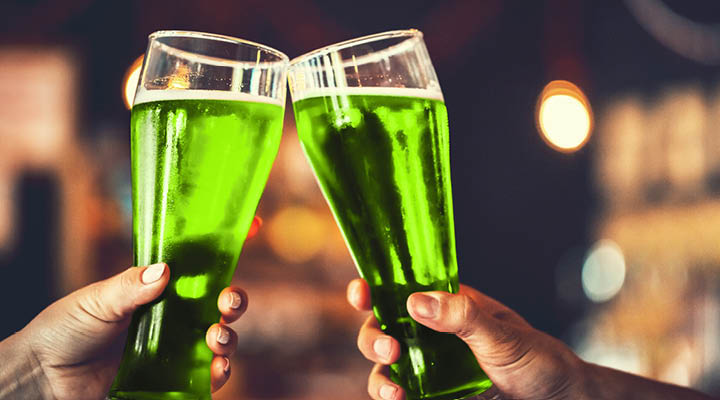St. Patrick’s Day has a reputation. A celebration of Irish pride, inhibitions are often thrown out the window in favor of a good time—one that typically involves alcohol. As much fun as St. Patrick’s Day can be, a day of debauchery doesn’t only leave a hangover. It also paves the way for cavities to set up shop on your teeth.
Tooth decay caused by alcohol consumption is a problem because of the sugars and acids in alcoholic drinks. When these sugars combine with natural bacteria in the mouth, they form an acid that attacks enamel and breaks it down. This is especially true when the teeth are constantly exposed to sugars and starches in alcohol without a break.
But it’s not just the sugar and starches in alcohol that can be harmful to teeth. Saliva is a powerful tool in reducing the incidence of cavities, and alcohol dries out the mouth just like smoking does. Dry mouth can accelerate the damage caused by the sugar in alcohol.
So be warned. If you are going to partake in St. Patrick’s Day shenanigans, give your mouth a break. Mix in some water between beverages as a buffer. It will clean your teeth and keep your body hydrated. Also, brush and floss your teeth as soon as possible after you’re finished having fun!
For those heavy drinkers planning on a weeklong St. Patrick’s Day celebration, the probability of damage from alcohol is much higher.
Heavy drinking can cause:
- Irritation of the gums, tongue, and oral tissues.
- Increase in tooth decay.
- Increased risk of periodontal (gum) disease.
- Poor healing after dental surgery.
- Poor dental health habits.
Heavy drinkers are also at greater risk of developing cancer in the mouth, throat, and esophagus. Obviously, these are side effects that you want to avoid. So if you’re going out for St. Patrick’s Day, take it easy. Your teeth will thank you!
Thinking about dying that drink green? Consider how you do it.

